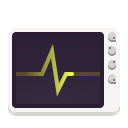Top libstatgrab Alternatives for Robust System Monitoring
libstatgrab is a powerful library written in C, designed to provide cross-platform access to a wide array of system statistics. It's a go-to for developers needing to access key metrics like CPU usage, memory utilization, disk usage, network traffic, and more. However, depending on your specific needs—whether it's a graphical interface, a different programming language integration, or specialized monitoring features—you might be looking for a robust libstatgrab alternative. This article explores some of the best tools and libraries that offer similar or expanded capabilities for system performance monitoring.
Top libstatgrab Alternatives
While libstatgrab excels as a foundational library, a diverse ecosystem of tools exists to provide system insights. Here are some of the top contenders that can serve as excellent alternatives, each with its unique strengths.

htop
htop is an interactive and highly popular process viewer for Linux, Mac, and BSD. As a text-mode application that runs on the command line and requires ncurses, it provides an intuitive, color-coded interface for monitoring processes and system performance, offering more interactivity and visual information than the traditional 'top' command. It's a fantastic lightweight and open-source alternative for real-time performance monitoring.

glances
Glances is a CLI curses-based monitoring tool developed in Python, leveraging the PsUtil library to gather system information. It's an excellent open-source alternative to libstatgrab, offering comprehensive network and hardware monitoring across Mac, Windows, Linux, and BSD. Its command-line interface makes it versatile for system administrators and developers alike.

GNOME System Monitor
GNOME System Monitor is a user-friendly graphical tool for managing running processes and monitoring system resources on Linux and BSD. It's a free and open-source application within the GNOME desktop environment, providing application monitoring and task management capabilities. For those who prefer a visual interface over a command-line tool, it serves as a solid libstatgrab alternative.

psutil
psutil is a powerful Python library that provides a portable interface for retrieving information on all running processes and system utilization (CPU, memory, disks, network, users). As a free and open-source library, it's highly versatile across Mac, Windows, Linux, and BSD. For developers seeking to integrate system monitoring capabilities into their Python applications, psutil is a direct and excellent libstatgrab alternative.

nmon
nmon is a free and open-source system administrator, tuner, and benchmark tool for Linux. It provides a vast amount of important performance information in a single view, capable of outputting data in various ways. While simpler in its feature description compared to others, its efficiency and comprehensive data presentation make it a valuable libstatgrab alternative for in-depth Linux system analysis.

Linux Process Explorer
Linux Process Explorer is a free and open-source tool designed for Linux systems, aiming to replicate the functionality and user experience of Windows Process Explorer. It offers a detailed view of running processes, making it a good alternative for users familiar with the Windows tool and seeking similar insights into their Linux environment.

Atop
Atop is an advanced interactive monitor for Linux systems, providing a detailed view of system-level and process-level load. As a free and open-source tool, it's particularly useful for in-depth hardware monitoring and performance analysis, making it a robust libstatgrab alternative for those needing granular control and insight.

Kiwi application monitor
Kiwi application monitor is a freemium program for Windows that allows you to monitor applications, processes, Windows activity, and user activity. While platform-specific to Windows and not open-source, it offers application monitoring capabilities for users requiring insight into their desktop environment, serving as an alternative for Windows-centric monitoring needs.
Each of these alternatives offers unique benefits, from command-line efficiency to graphical ease of use, and varying levels of detail. We encourage you to explore these options to find the best fit for your specific system monitoring requirements, whether you're a developer, system administrator, or a curious user.